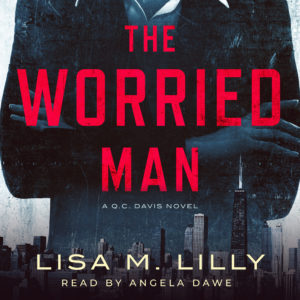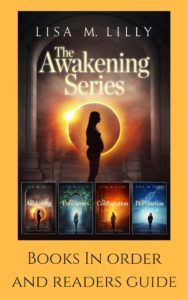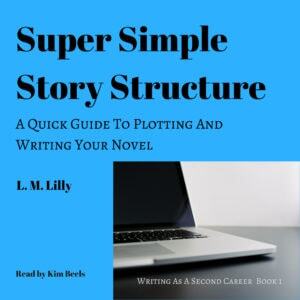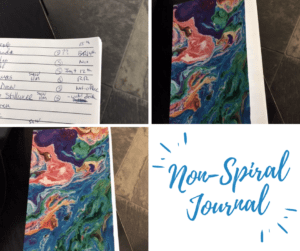Lisa M. Lilly's Blog, page 9
September 12, 2018
The Invitation: Psychological Suspense & Horror In Hollywood Hills (Women & Men in the Movies No. 1)
This week I’ll look at how women are portrayed and interact with other characters in the 2015 suspense/horror film The Invitation.
(Find out more about 3 tests I’ll use to guide the conversation in Women, Men, and Movies or just read on.)

The Story
Will is invited to a formal dinner party at a stunning, isolated Hollywood Hills mansion he used to live in with his ex-wife.
On returning to his former home, Will struggles with memories of and guilt over his son’s death. His ex-wife Eden’s insistence that she’s now free of pain disturbs him, especially because she’s been out of touch for the last two years. Her too-understanding ex-husband and slightly off-kilter house guests raise Will’s suspicions even before they show the dinner guests an unsettling video pitch for their cult-like new way of life.
Will’s friends and his girlfriend, though, are certain he’s uncomfortable due to grief and the strangeness of seeing his ex again. Will suspects something ominous is about to occur.
Chasing Bechdel
(Does a (named) female character talk to another named female character about anything other than a man?)
Who’s Talking To Whom
Women To Women:
Will’s ex-wife, Eden, talks to several women characters almost exclusively in one or two line conversations about:
Introducing themselves
staying after watching the video
There are 3 longer conversations:
Kira tells Eden to stop what she’s doing in the last quarter of the film when everything unravels (to put it mildly)
Kira tells dinner guest Gina that she and Will hit a coyote on the drive to the mansion and Will killed it with a tire iron
Eden and Kira talk about how Will is coping with the loss of his and Eden’s son
Men To Men:
Will talks with Eden’s new husband, David, about:
why the husband keeps all the doors locked
break ins and fire hazards
letting another dinner guest leave or not
whether The Invitation is a cult
the wine
Will’s apology for his seemingly odd or hostile behavior
Will talks to his three (named) male friends about:
the way Eden and David are acting
Will’s grief
Ben’s sex life
Will’s odd behavior
the good old days of their friendship
the business Ben and Will used to have
Will killing the coyote
the video pitch for The Invitation
the pills Eden may be taking
the weirdness of the evening
Will not feeling safe in the house
the friends’ take on Will’s odd behavior
Women And Men:
Named male and female characters talk to one another about:
Eden claiming pain is optional and feeling free
how Eden feels about her son’s death
all the topics above and
Eden choosing Will for The Invitation
Claire wanting to leave
Kira and David about leaving or staying
how to get out of the house
Eden’s and David’s two years in Mexico
sex
death (generally)
how Pruitt’s wife died
where missing dinner guest Troy is
cocaine
Eden and Will missing their son
Eden’s goal for the evening
Pruitt’s beliefs
David’s beliefs
Conclusion
The Invitation passes the Bechdel Test.
Despite featuring only minimal conversations among women, the film does show multiple named female characters talking to one another, rather than women only talking to men. It’s striking how much more substance and how many more topics there are when men talk to men or women and men talk to each other, but Will is the protagonist, so there’s some justification for that.
Similarly, there’s a reason the woman are talking about Will, as everyone is talking about Will. Everyone’s worried about him.
And the characters have similar conversations about Eden. There are more about Will, but whether Will’s fears about the gathering are based on a real threat to everyone or his feelings of guilt and grief is key to the story.
As mentioned last week, the Bechdel Test is a low bar, but sadly many movies don’t pass. The failure almost always draws me out of the movie. I’m a woman and almost every day I talk with both women and men rather than interacting solely with men, as many moviemakers appear to imagine women do.
Women v. Sexy Lamps
(can the main female character be replaced by a sexy lamp without affecting the plot?)
The main female character, Eden, drives the plot. She chooses Will in particular to be part of The Invitation. She joins The Invitation and wants her friends to join her to alleviate her pain over her son’s death.
If she were replaced with a sexy lamp, none of the story would happen.
Conclusion:
The Invitation passes the Sexy Lamp test.
Mako Mori
(does a female character have her own narrative arc that is not grounded in supporting a man’s story line?)
This test is a tougher call.
The only two female characters who might have their own narrative arcs are Kira and Eden. Kira arguably becomes more proactive from the beginning of the movie when she watches Will kill the coyote to the end when she acts as much as he does to struggle for safety. But these two actions are more like bookends without any real story for Kira in between that’s separate from Will’s.
As to Eden, she grows as a character in a sense.
She begins by insisting she is free of pain and guilt. This causes Will pain, as he feels she is making their son’s life and death meaningless. At the end she apologizes to Will and admits she misses their son. This arc, though, isn’t independent of Will, as she seems deeply invested in him joining her in The Invitation and in her struggle to deal with her grief.
On the other hand, as noted, she does set the entire plot in motion, and she is key to each phase of it.
If you shift and look at the movie through her eyes it’s about her striving to achieve true freedom from pain. With a few minor shifts, it could be a story independent of Will. As written, though, I don’t think it is.
Conclusion
In my view, there’s no Mako Mori narrative arc here, but I can see an argument otherwise. Convince me.
Quick Results
Bechdel: Pass
Sexy Lamp: Pass
Mako Mori arc: Probably not
Did I Like It
Maybe because I’m not a movie critic by trade (or at all) but instead a writer who loves story, in the end what I care most about is did I enjoy the movie.
I did.
It’s creepy, unnerving, frightening, and a study of characters in close quarters facing intense conflict and heartbreaking loss. Watching it a second time to prepare for this article I caught things I’d missed before. To me, a movie that stands up to rewatching is a good one.
Next Week’s Film
A 2018 rom-com from Netflix, Set It Up. I chose it because I like Lucy Liu so much in Elementary, and she is one of the stars. I’m not usually a big fan of rom-coms. Happily, this one was far better than I expected.

The post The Invitation: Psychological Suspense & Horror In Hollywood Hills (Women & Men in the Movies No. 1) appeared first on Lisa Lilly.
The Invitation: Psychological Suspense & Horror In Hollywood Hills (Women, Men, and Movies No. 1)
This week I’ll look at how women are portrayed and interact with other characters in the 2015 suspense/horror film The Invitation.
(Find out more about 3 tests I’ll use to guide the conversation in Women, Men, and Movies or just read on.)

The Story
Will is invited to a formal dinner party at a stunning, isolated Hollywood Hills mansion he used to live in with his ex-wife.
On returning to his former home, Will struggles with memories of and guilt over his son’s death. His ex-wife Eden’s insistence that she’s now free of pain disturbs him, especially because she’s been out of touch for the last two years. Her too-understanding ex-husband and slightly off-kilter house guests raise Will’s suspicions even before they show the dinner guests an unsettling video pitch for their cult-like new way of life.
Will’s friends and his girlfriend, though, are certain he’s uncomfortable due to grief and the strangeness of seeing his ex again. Will suspects something ominous is about to occur.
Chasing Bechdel
(Does a (named) female character talk to another named female character about anything other than a man?)
Who’s Talking To Whom
Women To Women:
Will’s ex-wife, Eden, talks to several women characters almost exclusively in one or two line conversations about:
Introducing themselves
staying after watching the video
There are 3 longer conversations:
Kira tells Eden to stop what she’s doing in the last quarter of the film when everything unravels (to put it mildly)
Kira tells dinner guest Gina that she and Will hit a coyote on the drive to the mansion and Will killed it with a tire iron
Eden and Kira talk about how Will is coping with the loss of his and Eden’s son
Men To Men:
Will talks with Eden’s new husband, David, about:
why the husband keeps all the doors locked
break ins and fire hazards
letting another dinner guest leave or not
whether The Invitation is a cult
the wine
Will’s apology for his seemingly odd or hostile behavior
Will talks to his three (named) male friends about:
the way Eden and David are acting
Will’s grief
Ben’s sex life
Will’s odd behavior
the good old days of their friendship
the business Ben and Will used to have
Will killing the coyote
the video pitch for The Invitation
the pills Eden may be taking
the weirdness of the evening
Will not feeling safe in the house
the friends’ take on Will’s odd behavior
Women And Men:
Named male and female characters talk to one another about:
Eden claiming pain is optional and feeling free
how Eden feels about her son’s death
all the topics above and
Eden choosing Will for The Invitation
Claire wanting to leave
Kira and David about leaving or staying
how to get out of the house
Eden’s and David’s two years in Mexico
sex
death (generally)
how Pruitt’s wife died
where missing dinner guest Troy is
cocaine
Eden and Will missing their son
Eden’s goal for the evening
Pruitt’s beliefs
David’s beliefs
Conclusion
The Invitation passes the Bechdel Test.
Despite featuring only minimal conversations among women, the film does show multiple named female characters talking to one another, rather than women only talking to men. It’s striking how much more substance and how many more topics there are when men talk to men or women and men talk to each other, but Will is the protagonist, so there’s some justification for that.
Similarly, there’s a reason the woman are talking about Will, as everyone is talking about Will. Everyone’s worried about him.
And the characters have similar conversations about Eden. There are more about Will, but whether Will’s fears about the gathering are based on a real threat to everyone or his feelings of guilt and grief is key to the story.
As mentioned last week, the Bechdel Test is a low bar, but sadly many movies don’t pass. The failure almost always draws me out of the movie. I’m a woman and almost every day I talk with both women and men rather than interacting solely with men, as many moviemakers appear to imagine women do.
Women v. Sexy Lamps
(can the main female character be replaced by a sexy lamp without affecting the plot?)
The main female character, Eden, drives the plot. She chooses Will in particular to be part of The Invitation. She joins The Invitation and wants her friends to join her to alleviate her pain over her son’s death.
If she were replaced with a sexy lamp, none of the story would happen.
Conclusion:
The Invitation passes the Sexy Lamp test.
Mako Mori
(does a female character have her own narrative arc that is not grounded in supporting a man’s story line?)
This test is a tougher call.
The only two female characters who might have their own narrative arcs are Kira and Eden. Kira arguably becomes more proactive from the beginning of the movie when she watches Will kill the coyote to the end when she acts as much as he does to struggle for safety. But these two actions are more like bookends without any real story for Kira in between that’s separate from Will’s.
As to Eden, she grows as a character in a sense.
She begins by insisting she is free of pain and guilt. This causes Will pain, as he feels she is making their son’s life and death meaningless. At the end she apologizes to Will and admits she misses their son. This arc, though, isn’t independent of Will, as she seems deeply invested in him joining her in The Invitation and in her struggle to deal with her grief.
On the other hand, as noted, she does set the entire plot in motion, and she is key to each phase of it.
If you shift and look at the movie through her eyes it’s about her striving to achieve true freedom from pain. With a few minor shifts, it could be a story independent of Will. As written, though, I don’t think it is.
Conclusion
In my view, there’s no Mako Mori narrative arc here, but I can see an argument otherwise. Convince me.
Quick Results
Bechdel: Pass
Sexy Lamp: Pass
Mako Mori arc: Probably not
Did I Like It
Maybe because I’m not a movie critic by trade (or at all) but instead a writer who loves story, in the end what I care most about is did I enjoy the movie.
I did.
It’s creepy, unnerving, frightening, and a study of characters in close quarters facing intense conflict and heartbreaking loss. Watching it a second time to prepare for this article I caught things I’d missed before. To me, a movie that stands up to rewatching is a good one.
Next Week’s Film
A 2018 rom-com from Netflix, Set It Up. I chose it because I like Lucy Liu so much in Elementary, and she is one of the stars. I’m not usually a big fan of rom-coms. Happily, this one was far better than I expected.

The post The Invitation: Psychological Suspense & Horror In Hollywood Hills (Women, Men, and Movies No. 1) appeared first on Lisa Lilly.
September 5, 2018
Women, Men, and Movies
 In my twenties I lived with a screenwriter.
In my twenties I lived with a screenwriter.
We were broke, but every week we went to the local second run theater and saw a movie. We also borrowed a movie on VHS tape at our library once a week. (Yes, VHS, it was that long ago.) We talked about what we watched, and I learned a ton about character, plot, and writing.
And had fun.
Sadly, I’ve yet to find anyone who likes to take apart a movie the same way. (When I tried it with the next guy I dated he said, “Can’t you just enjoy the movie?” But I was enjoying it.)
The screenwriter and I broke up, I later went to law school, life got more hectic, and I never quite watched as many movies again.
When I do watch movies, I’m often pulled out of the story by the way women characters are shown. I’ll find myself thinking things like, “Really? This woman has not a single female colleague?” or “Seriously? Not one woman friend she’d talk to about her mother’s death?” The lack of realism undermines the film for me.
Which in a way is progress.
Just out of college I never thought much about gender in movies.
Now, to combine work and fun, I plan to write about films here, particularly looking at how the way filmmakers depict women affects characterization and plot, as well as how much I enjoy each movie.
There are three tests I’ll consider:
The Bechdel Test
The Sexy Lamp Test
The Mako Mori Test

The Bechdel Test
The Bechdel Test looks at how women are shown in the film, asking whether:
(1) two (named) female characters;
(2) talk to one another;
(3) about something other than a man.
If this test strikes you as not truly addressing characterization, you’re right. A movie can pass if Karen asks Jacinda if she’d like some tea and Jacinda says yes.
Which makes it more disturbing that so many movies don’t pass.
(If you’re a Star Trek fan you can check the Mary Sue to see how well all the Star Trek iterations do.)
The Sexy Lamp Test
This test, proposed by comic book creator Kelly Sue DeConnick, asks whether you could replace your female character with a sexy lamp and not affect the plot.
(Note: her language is a bit colorful, so don’t click if you prefer PG language.)
The Mako Mori Test
If a movie features only one woman–think of Pacific Rim, whose character gives the test its name, or Gravity–by definition it can’t pass the Bechdel Test. It might still, however, feature a strong story and a three-dimensional woman character.
To look at these types of movies, a Tumblr user, chaila, proposed the Mako Mori Test, described as follows in The Daily Dot:
The film features
a) a female character;
b) with a narrative arc of her own;
c) “that is not about supporting a man’s story.” (quoting chaila)
To start off my Women, Men, and Movies reviews, next Wednesday I’ll review the 2015 film The Invitation. In the meantime, feel free to share your thoughts on these tests in the comments.
The post Women, Men, and Movies appeared first on Lisa Lilly.
August 29, 2018
On Finding Enough Time
 Because I’m working on a book about happiness, anxiety, and creativity I’ve been thinking a lot about time. As in, a lot of people, including me, feel anxious about not having enough time.
Because I’m working on a book about happiness, anxiety, and creativity I’ve been thinking a lot about time. As in, a lot of people, including me, feel anxious about not having enough time.
By definition, being human and mortal means not having enough time.
Most of us can think of more things to do than we could ever engage in during an average lifespan.
Yet there are periods in my life when I’ve felt extreme anxiety over not having enough time and others when I’ve felt, in contrast, more relaxed about time. As if I’m truly enjoying the time I have despite it being limited.
So what is “enough time”?
Doing What You Don’t Love
I love to read.
But last night something strange happened. As I read a book I’m halfway through and so far don’t particularly love (The Shining Girls—I’ll review later on Goodreads), it hit me.
Reading a book I don’t love and finishing it all the same makes me feel like I have plenty of time.
Before I went to law school I finished almost every novel I ever started, whether I liked it or not. It happened a fair amount because I often picked books at random from library shelves and read them simply because I liked the descriptions.
Since law school, I’ve chosen only books or authors I felt pretty sure I’d like. And if I didn’t after the first 10-20 pages, I stopped reading.
The freedom to read something I don’t love tells me that I am not merely cramming things I enjoy into tiny little pieces of time.
Without A Purpose
Reading nonfiction that doesn’t directly relate to my legal or writing work also makes me feel like I have a lot of time.
Why?
Because it’s reading simply for the sake of learning whether or not it might help my profession. The reality is that kind of reading almost always factors into my writing, teaching, or law practice. In fact, it’s probably much better for all three to read widely.
But back when so many hours of my life were already filled with practicing law and I barely squeezed in writing, I felt I couldn’t justify reading non-fiction simply for the sake of it. If I had free time to read, that sliver went to novels I knew I’d love.
A Few Moments Of Rest
Because I’m still rehabbing from breaking my foot earlier this year I need to take a lot of breaks when I walk.
That led to me sitting in some of Chicago‘s many lovely outdoor plazas and reading—or simply sitting. For the first time since I can remember I feel like I’m truly enjoying the summer, despite that for the first month of it I barely got outside.
The difference is that now once a day I’m truly spending time in the city, not just walking from Point A to Point B as quickly as I can.
Putting It Together
Yes, I love reading, and I also love Chicago. So spending more time on both makes me happier.
But I figured out my feeling of having enough time comes from 3 things.

Doing (Or Being)
Allowing myself to read or sit for no reason other than I want or need to do that makes me feel less rushed.
It means I’m taking moments to immerse myself in where I am regardless whether it’s the absolute best use of my time.
The primary purpose isn’t to achieve anything.
It’s to do the thing. To read simply to read. To rest simply to rest.
Experimenting
Finishing a book I don’t particularly love is an experiment.
I’m letting myself see if by the end I might feel it was worthwhile reading that book. Whether that’s because the ending makes the rest of it resonate more or because I learned something I otherwise wouldn’t have or because I simply stepped into the shoes of a character I don’t especially like.
Likewise, stopping at a plaza because I need to rest means I experience things I didn’t plan.
Yesterday I rested on the outskirts of an ice cream social and heard a band of four guys who sang beautiful harmonies. Another time I discovered a Farmer’s Market I hadn’t known would be there.
Living
It’s not as if in the past I ignored the city around me. You can see many photos of Chicago on my Instagram feed.
But mostly those photos were taken as quick shots on my way somewhere or out my window or off my deck from home. I’m not sitting and absorbing the sights and sounds and smells. (A few of those smells aren’t pleasant in the middle of Chicago. But others are—like the cheese and caramel mix from Garrett’s Popcorn or lilacs along an underpass near where I live.)
And rather than sitting only during the five minutes when the weather is perfect, I’m feeling heat and humidity, fog and drizzle.
So for me, apparently, having enough time means the freedom to do things I didn’t plan and that I’m not sure I’ll enjoy.
How about you? What makes you feel like you have enough time?
The post On Finding Enough Time appeared first on Lisa Lilly.
August 22, 2018
Real Bees In An Imaginary Garden
In front of me a woman and her husband face one another on their porch. They’ve just reunited after a long separation. The rows of worn floorboards between them and their halting, hesitant way of speaking tell me there’s a lot no one is saying. Despite the wife’s smiles and efforts to set her husband at ease, this isn’t a happy reunion.
To my left, barely within my peripheral vision, bees buzz angrily inside a beehive.
I hope none of them gets out.
The thought, or really more of a feeling, comes from my gut before my rational mind kicks in. I’m not afraid of a single bee, but a whole hive could pose danger. So it’s normal to have that fear.
Except that there’s no beehive and no bees, only a well-made prop and sound effects. The people on the porch are actors. Their daughters, whose struggles over the next hour to come to terms with their father’s return from prison, break my heart, and they are actors, too.

But for that moment–for a lot of moments–I forgot.
I lived in an imaginary world where everything became real. It reminded me of reading books as a kid. When I focused all my concentration and the world outside fell away.
When someone speaking to me or touching my arm in the real world could barely reach me, and when it did I blinked as if coming out of a dream.
It’s the effect every writer, actor, director, and artist strives for.
It’s why I read books and watch movies and see plays. To live other lives as if they were real.
Especially now when so much of my life is writing, it’s rare that I can turn off my writer brain. It keeps asking things like How did the writer do that? Did that work for me? Do I believe that character would say that line that way?
So I’m grateful to director Jess Hutchinson, playwright Emily Dendinger, and the entire cast and crew of No Home For Bees, as well as to 20% Theatre Company, for that evening when I lived other lives in another place.
What amazes me further is No Home For Bees was a workshop production. It was produced to get feedback from audience members and give the creators a chance to present the work in a space beyond a reading but before a more formal run.
And it was magic. If I hadn’t seen it on its last weekend, I would have returned at least once if not twice so I could try to figure out how they did it.
As it was, I simply enjoyed the real bees.
The post Real Bees In An Imaginary Garden appeared first on Lisa Lilly.
August 15, 2018
Release Day: Audiobook Edition of The Worried Man
 Thanks to Blunder Woman Productions and narrator Angela Dawe, The Worried Man, the first book in my new Q.C. Davis suspense/mystery series, released today in audiobook format.
Thanks to Blunder Woman Productions and narrator Angela Dawe, The Worried Man, the first book in my new Q.C. Davis suspense/mystery series, released today in audiobook format.
More about The Worried Man (Q.C. Davis 1):
She loved him, but did she know him?
The night before they plan to move in together, Quille finds the body of the man she loves dead in his apartment. Police point to his failed medical career and past alcoholism as evidence of suicide or accidental overdose. His ex-wife agrees. Marco’s son insists his father was stable, sober, and excited about his future with Quille.
Suspicious of the police based on bitter experience, Quille vows to find the truth and help Marco’s son. Using her skills as an attorney and former stage actress, she investigates a world filled with fraud and corrupt Chicago politics. The closer she gets to the truth, though, the less likely she is to survive to tell it….
The Worried Man is perfect for fans of Sara Paretsky, Jonathan Kellerman, and Elly Griffiths.
©2018 Lisa M. Lilly (P)2018 Blunder Woman Productions
Listen to a sample now.
The post Release Day: Audiobook Edition of The Worried Man appeared first on Lisa Lilly.
August 8, 2018
The Inside Guide To The Awakening Series

Recovering from a broken foot, oddly, slowed down my writing process a bit. (It’s tiring to be in a cast–who knew?) But I did at last finish the Books In Order And Reader’s Guide for the Awakening Series.
If you’re a member of my Reader’s Group and have searched the Internet far and wide for my blog posts and interviews, you may have seen some of the material in it. Now all of that is in one easy-to-follow guide.
The guide also includes brand new pieces.
If you haven’t finished reading the series yet, don’t worry.
The Reader’s Guide portion is segmented by installment, so you can easily skip to and read only the interviews or essays for books you’ve already read.
Where Are They Now?
One of the new interviews the guide includes is with reader favorite Sophia Gaddini. The interview takes place after the end of the last book in the series, The Illumination. Sophia gives her candid–as always–opinion on Tara’s and Cyril’s relationship, her own love life, and on how exactly Tara’s supernatural pregnancy was caused.
She also shares updates about the characters’ lives.
Highlights From The Reader’s Guide
Highlights of the Reader’s Guide include:
An interview with Tara about how she felt the day after The Awakening, Book 1, ended;
Sophia’s views on character relationships, including her own and Tara’s and Cyril’s;
The author’s take on the themes of the series;
An exploration of forced pregnancy narratives;
Updates on events and characters a year after the fourth and final book, The Illumination.
Where To Find It
Those who join my M.O.S.T. (mystery, occult, suspense, thriller) Reader’s Group will receive a link to download the guide free, plus will get other bonus items and a monthly e-newsletter.
Otherwise, you can buy the Books In Order And Reader’s Guide for the Awakening Series at the following links:
Kindle
Paperback
Nook
Kobo
The post The Inside Guide To The Awakening Series appeared first on Lisa Lilly.
August 1, 2018
Plot Or Not: Super Simple Story Structure (new Audiobook edition)
 When I started writing, I struggled with plot.
When I started writing, I struggled with plot.
As in my first novel didn’t exactly have one, probably why it got nothing but form letter rejections. I’d taken writing classes, but those classes almost exclusively focused on whether a scene worked or not. The advice on plot was basically to string the scenes together.
That might work for some writers, but it didn’t for me.
It’s also not the kind of book I like to read. I prefer genre fiction–mainly suspense, thriller, horror, and mystery. Those types of books rise and fall on how much the reader is invested in the characters and on whether the plot keeps the reader turning pages and reaches a satisfying resolution.
Learning To Plot From Stephen King
I learned to plot by hanging out with a screenwriter and reading all the writing books he read, by writing two more novels that didn’t work, and by dissecting novels I loved.
Those novels included Stephen King’s The Dead Zone, my favorite of all his books. Interestingly, I heard him say later that it was the only book of his that he outlined in advance. So there you go–as a reader, I love a well-structured plot.
Between Plotting And Pantsing
The plotting method I’ve found works best threads the line between a detailed outline (known as being a “plotter” in the current writing world) and winging it (being a “pantser”).
Before I write anything, I figure out my main characters, their main conflict, and five major plot turns. That gives me a framework for my novel. It helps me write quickly without locking me into a minute-by-minute outline.
Last year I wrote about that method in Super Simple Story Structure: A Quick Guide To Plotting And Writing Your Novel. I made it available in both ebook and workbook editions.
Now for the first time you can buy it (or use an Audible credit to download it) in audiobook format.
If you’ve never listened to an audiobook before, you can download Super Simple Story Structure free as part of a trial membership.
This method is simple, and it can help you get started on a novel or figure out what’s working and not and how to fix it at the rewrite stage.
Let me know how it goes!
The post Plot Or Not: Super Simple Story Structure (new Audiobook edition) appeared first on Lisa Lilly.
July 25, 2018
Rediscovering The Neighborhood Bookstore
A few days ago I did something I haven’t done in a long time–walked to my neighborhood bookstore, Sandmeyer’s.
I love the hardwood floors in Sandmeyer’s. Some boards creak when you step on them. It also smells like wood, a smell I associate with books and therefore love.
There were two reasons I hadn’t visited there in forever.
Drifting Away From The Bookstore
One reason is that I’ve spent since April 22 recovering from a broken foot.
A lot of that time I was in casts (photos of the pink and orange casts are included in previous posts here and here) and on crutches. But now I’m walking on my own two feet again. It’s a big part of my physical therapy.

While stuck on crutches, ordering online made life much more manageable. From vitamins to socks for my removable cast to a pretty blank journal (shown at left), I relied on deliveries for almost everything.
The second reason I haven’t been to the local bookstore in a long time is that for most of the years I practiced law I worked late at my office each evening and worked weekends.
That schedule meant I was rarely free when Sandmeyer’s–or any neighborhood retail store–was open.
A Tale Of Two Journals
I decided to walk to Sandmeyer’s–about a mile round trip–and buy a new blank book/journal. I use them both for scrawling notes about first drafts and rewrites and for writing a page or so each morning about what I’m grateful for.
What I found was different than what I’d seen online. At first I wasn’t happy.
I loved the cover for one of the journals. But I flipped to the back to look at the price. And I put it back down.
Which was kind of crazy.
It was $12.95, about $7 more than I’d paid for the previous journal, but not a fortune. Still, I didn’t really need this journal. I could staple scrap paper together or buy a cheap spiral notebook. So I almost left without buying.

Inside The Bookstore
Instead, I examined the journal.
I felt the heavy cover, one that won’t bend or fold like the one I’d bought online. I turned pages, thinking how it would lie flat because it’s spiral bound. I saw the inside pocket. (There’s no pocket in the previous journal I bought.) Sometimes when I travel, I write on scrap paper. With the pocket, I could store those pages in the journal.
Finally, there were far more lines per page than in the previous journal, both because the pages are larger and because the lines are closer together.
Most of all, I loved being able to see the lines I’d be writing on and feel the book I’d be holding.
I bought it. Now each time I look at it, I feel happy.
I think I’ll be walking to Sandmeyer’s more often.
The post Rediscovering The Neighborhood Bookstore appeared first on Lisa Lilly.
July 18, 2018
Fiction And Life
My fiction is not autobiographical.
Not only have I never experienced a supernatural pregnancy (surprise, right?) as does Tara, the main character in The Awakening Series, I’ve never been pregnant at all. I’ve also never dated a vampire (When Darkness Falls), and unlike Q.C. (Quille) Davis, I don’t investigate crimes and no one I love has been murdered.
(I did work in the tower formerly known as Sears, but nothing occult happened there. That I know of.)
 Yet as I walked today through Printers Row, the neighborhood where Quille, the protagonist of my new suspense series, and I live, I realized that the fiction I choose to write reflects a lot about what’s going on with me.
Yet as I walked today through Printers Row, the neighborhood where Quille, the protagonist of my new suspense series, and I live, I realized that the fiction I choose to write reflects a lot about what’s going on with me.
Not so much what I’m doing but how I feel about it.
Travel To Far Off Places
I wrote The Awakening Series during the years I was a full-time practicing lawyer, typically clocking 50-65 hours a week. People often asked me why I wasn’t writing legal thrillers.
Seriously? No. No more law.
I wrote not to spend more time in the legal world but to escape.
Tara and other important characters in the series travel to Armenia (including its capital, Yerevan, and its more rural areas); Florence, Italy (to search for an ancient letter); to Istanbul, Turkey (almost getting killed there and meeting a billionaire benefactor and a Sufi elder); Paris, France; and all over the United States. (You can sees some photos of these places on my Pinterest page.)
Why?
Partly because it’s a thriller series and a convention of the genre is taking readers to different parts of the world.
But it’s also because while I enjoyed aspects of my law practice, I also associated it with too much work and a lot of stress. I wrote to get away from it.
Chicago Scenes In Fiction And Life
I love Chicago. I always have.
Now that I write mainly from home and so much of my workday involves writing fiction, I’m able to really relax and enjoy the city I live in. I take more walks (also part of my physical therapy since I broke my foot). I study and immerse myself in the city in ways I just didn’t have time for when I was spending all my hours in offices, conference rooms, airplanes, and courtrooms.

Through my new hero, Q.C. Davis, I’m able to share all of this with readers.
Maybe It’s OK To Be A Lawyer
Now that my real life law practice is limited (often to less than a few hours a week), I don’t mind writing about being a lawyer, which is why that’s Quille’s main profession. I enjoy drawing on parts of what I learned as a lawyer and what I’ve picked up from other lawyers I know.
Motives for suspects in The Worried Man include real estate and insurance fraud, areas I learned a lot about as a litigator.
The Charming Man touches on immigration and criminal law. And Quille uses skills I learned in interviewing and deposing both friendly and hostile witnesses and gathering information that I picked up over the decades I’ve worked in law.
That’s not to say that Quille is just like me.
She’s not. For one thing, she began working as a child stage actress at age eight and did so through college. That’s a bit of wish fulfillment on my part. I took a lot of summer theater classes and got parts in high school plays and musicals, but I never acted professionally.
Quille also gets to say a lot of things that I only think.
While I like to think we share a desire to treat people well, Quille is far more comfortable with confrontation than I am. I admire that about her.
I also think it’s pretty cool that she solves crimes.
What sorts of books might I write if/when the Q.C. Davis series runs it’s course?
Who knows, but I’ll be excited to find out.
The post Fiction And Life appeared first on Lisa Lilly.



